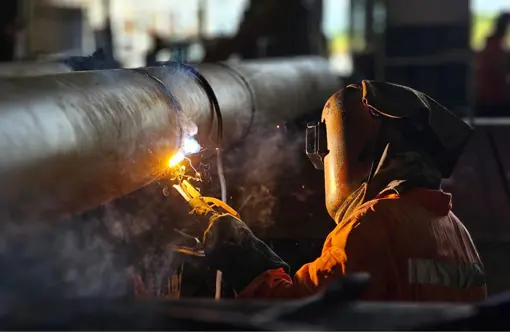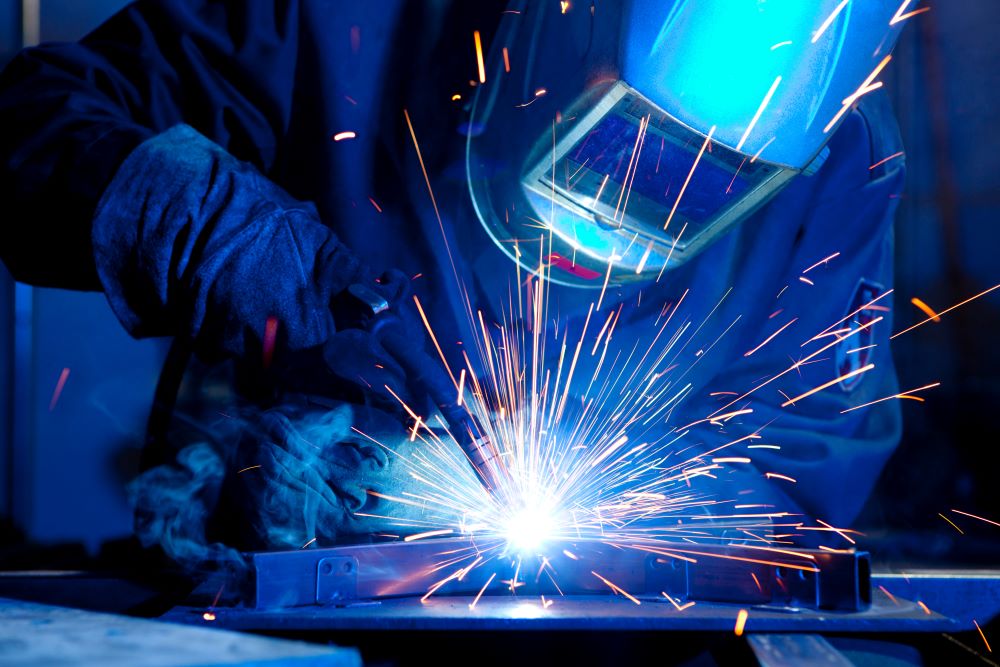Effective weld inspection practices shared by Montana Mobile Welding and Repair
Wiki Article
Usual Welding Repair Work Issues and Exactly How to Address Them Effectively
Welding repair work often run into a series of concerns that can threaten the honesty of the last item. Common problems consist of poor infiltration, porosity, and imbalance, amongst others. Each issue offers unique challenges that need particular strategies for resolution. Recognizing these issues is necessary for welders aiming to boost their skills and results. This conversation will certainly explore these typical welding repair issues and efficient methods to resolve them.Insufficient Infiltration
Inadequate infiltration occurs when the weld steel fails to completely fuse with the base product, leading to weak joints and prospective structural failures. This issue typically stems from not enough warm input, incorrect electrode angle, or inappropriate welding speed. Welders may experience insufficient penetration as a result of a mistake of the required specifications for a particular material density or type. Additionally, contamination on the base product's surface can impede effective bonding, intensifying the issue. To deal with inadequate penetration, welders ought to ensure proper settings on their tools and maintain a clean job surface area. Routine evaluation of welds is suggested to identify any kind of deficiencies early, enabling timely modifications and the avoidance of compromised structural integrity in welded settings up.Porosity
Porosity is an usual issue in bonded joints that manifests as little gas bubbles caught within the weld steel. This problem can jeopardize the stability of the weld, causing lowered strength and potential failing under anxiety. Montana Mobile Welding and Repair Welding. Porosity commonly occurs from contamination, dampness, or improper welding strategies, which permit gases to leave into the molten weld swimming pool. To address porosity, welders ought to guarantee proper surface preparation, maintain a clean functioning environment, and make use of suitable welding specifications. Furthermore, choosing the ideal filler product and shielding gas can reduce gas entrapment. Regular assessment and testing of welds can assist recognize porosity early, assuring prompt corrective activities are taken, thereby maintaining the top quality and dependability of the welded frameworkMisalignment
Imbalance in welding can arise from numerous variables, including inappropriate setup and thermal expansion. Recognizing the origin is necessary for reliable resolution. A number of modification methods are available to realign elements and guarantee architectural honesty.Sources of Imbalance
Welding misalignment typically originates from a selection of underlying issues that can jeopardize architectural honesty. One primary cause is incorrect fit-up of elements before welding, which can lead to spaces and irregular surface areas. Variations in thermal expansion throughout the welding process can likewise cause distortion, specifically if the materials being signed up with have various coefficients of development. In addition, poor fixturing and securing might fail to hold components securely in area, bring about motion throughout welding. Badly kept tools, consisting of welding machines and devices, may present variances in the weld grain, further contributing to imbalance. Driver error, stemming from not enough training or experience, can additionally play a substantial function in producing misaligned welds.
Improvement Methods Available
Addressing imbalance properly needs a combination of corrective techniques customized to the specific problems handy. One usual technique is the usage of components or jigs to hold parts in the correct setting during welding, making certain regular alignment. In addition, pre-heating the products can help lower distortion and enhance fit-up. For significant imbalance, mechanical adjustment methods, such as utilizing hydraulic jacks or clamps, can be used to deal with the position before welding. Post-weld warm therapy might likewise be required to soothe stress and anxieties triggered by imbalance. Careful inspection and adjustment during the configuration stage can avoid imbalance problems from ending up being considerable troubles, advertising a smoother welding process and boosting overall architectural honesty.Distortion
Distortion is a common challenge in welding that can emerge from various factors, including irregular heating & cooling. Understanding the reasons of distortion is necessary for implementing effective prevention techniques. Resolving this concern not just boosts architectural honesty but likewise boosts the total top quality of the weld.Causes of Distortion
When subjected to the intense warm of welding, materials typically undertake changes that can lead to distortion. This sensation mostly occurs from thermal expansion and contraction throughout the welding procedure. As the weld area warms up, the product broadens; upon cooling, it gets, which can develop internal stress and anxieties. Furthermore, unequal home heating across a work surface can exacerbate these anxieties, causing bending or bending. The sort of product additionally plays a significant duty; metals with differing thermal conductivity and coefficients of growth might react in a different way, bring about uncertain distortions. Poor joint style and poor fixturing can contribute to misalignment during welding, increasing the likelihood of distortion. Recognizing these causes is crucial for efficient welding repair work and prevention strategies.Avoidance Techniques
Effective prevention methods for distortion during welding concentrate on managing warm input and guaranteeing appropriate joint design. Preserving a regular warmth input assists to decrease thermal development and contraction, which can result in distortion. Using methods such as pre-heating the workpiece can likewise minimize the temperature level slope, advertising consistent heating. In addition, picking suitable joint layouts, such as T-joints or lap joints, can boost security and reduce stress and anxiety concentrations. Executing proper fixturing to protect the workpieces in position even more aids in keeping placement during the welding process. Staggered welding series can distribute warm more equally, preventing localized distortion. By using these strategies, welders can considerably reduce the possibility of distortion and enhance the general high quality of their welds.Breaking
Fracturing is an usual concern come across in welding repair work, often resulting from different elements such as inappropriate air conditioning rates, material choice, or insufficient joint prep work. The occurrence of splits can significantly jeopardize the stability of the weld, resulting in potential failures throughout operation. To address this problem, welders need to initially analyze the origin, making certain that products work and suitably chosen for the details official source application. Furthermore, controlling the air conditioning price throughout the welding process is vital; quick cooling can generate stress and cause cracking. Proper joint design and preparation additionally add to minimizing the threat. Executing these techniques can enhance weld top quality and sturdiness, eventually minimizing the possibility of cracking in ended up weldments.
Incomplete Blend
A significant concern in welding fixings is insufficient fusion, which occurs when the weld steel does not effectively bond with the base material or previous weld passes - Montana Mobile Welding and Repair Belgrade Fabrication. This issue can bring about weak points in the joint, potentially endangering the stability of the welded framework. Variables adding see this here to insufficient fusion include insufficient warmth input, incorrect welding strategy, and contamination of the surface areas being joined. To resolve this issue effectively, welders should ensure appropriate pre-weld cleansing and surface area preparation, as well as readjust their welding criteria to achieve adequate penetration and combination. Routine inspection throughout the welding process can additionally help identify incomplete combination early, enabling timely rehabilitative steps to boost the overall high quality of the weldOverheating
While welding repairs can enhance structural integrity, overheating offers a significant difficulty that can result in material deterioration. Too much heat throughout welding can modify the mechanical properties of metals, causing decreased stamina, raised brittleness, and warping. This sensation is particularly essential in high-stress applications where architectural reliability is paramount. Recognizing overheating can involve visual assessments for discoloration or distortion, along with monitoring temperature level during the welding procedure. To mitigate the risks connected with overheating, welders should utilize appropriate strategies, such as managing warmth input, changing traveling rate, and utilizing suitable filler materials. Additionally, applying pre- and post-weld warm treatments can help restore material properties and enhance the general top quality of the repair work, making certain long-term performance and safety and security.Frequently Asked Concerns
What Are the Common Signs of a Welding Issue?

Just How Can I Examine My Welds for Quality?
To evaluate welds for high quality, one can use aesthetic assessments, ultrasonic testing, and radiographic approaches. Each method guarantees structural integrity, recognizes flaws, and validates adherence to defined criteria, inevitably enhancing the dependability of the bonded joints.What Security Safety Measures Should I Take While Welding?
When welding, one should prioritize safety by using proper individual safety equipment, guaranteeing proper air flow, safeguarding flammable products away, keeping a clean workspace, and click here for info being aware of surroundings to avoid injuries and accidents.Can I Repair a Weld Without Redoing the Entire Joint?
Fixing a weld without renovating the entire joint is possible, depending on the damage (Montana Mobile Welding and Repair Fabrication). Methods such as grinding, adding filler material, or using a welding procedure can successfully address particular defects while maintaining the bordering frameworkWhat Tools Are Important for Effective Welding Repair Works?
Essential devices for effective welding fixings consist of a welding equipment, cord brush, mill, safety gear, clamps, and filler materials. Each tool plays an important duty in making certain quality and safety and security during the repair procedure. Porosity commonly occurs from contamination, wetness, or improper welding techniques, which permit gases to leave into the molten weld swimming pool. Poorly maintained devices, consisting of welding equipments and devices, might introduce variances in the weld grain, further contributing to misalignment. When subjected to the intense heat of welding, products usually undergo changes that can lead to distortion. Splitting is an usual problem encountered in welding fixings, commonly resulting from different elements such as improper cooling rates, material choice, or insufficient joint prep work. A considerable concern in welding repairs is insufficient blend, which takes place when the weld steel does not adequately bond with the base material or previous weld passes.Report this wiki page